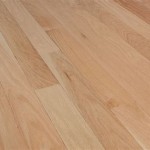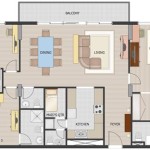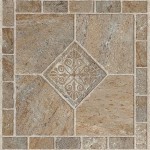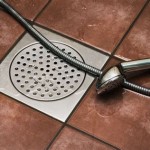What Type of Flooring Is Best for a Second Floor?
Choosing the right flooring for a second story involves considering several factors beyond aesthetics. Noise reduction, comfort, maintenance, and the existing subfloor all play crucial roles in determining the ideal flooring material. This article explores various flooring options suitable for second-floor installations, outlining their advantages and disadvantages to aid in informed decision-making.
Carpet
Carpet remains a popular choice for second-floor applications due to its inherent comfort and superior sound-dampening qualities. The soft, plush surface provides a warm and inviting feel underfoot, while the fibers effectively absorb impact noise, minimizing sound transmission to the floor below. Carpet is available in a vast array of colors, textures, and pile heights, offering ample design flexibility.
However, carpet requires regular vacuuming and occasional deep cleaning to maintain its appearance and hygiene. It can also trap allergens, which may be a concern for individuals with sensitivities. Furthermore, spills and stains can be challenging to remove completely, requiring prompt attention and specialized cleaning solutions.
Hardwood
Hardwood flooring offers timeless elegance and enduring durability. Its natural beauty enhances the aesthetic appeal of any space, while its robust construction withstands heavy foot traffic. Hardwood is relatively easy to clean and maintain, requiring only sweeping and occasional mopping. Engineered hardwood, in particular, is well-suited for second-floor installations due to its dimensional stability, making it less susceptible to moisture fluctuations.
While hardwood offers numerous advantages, it can be more expensive than other flooring options. It also transmits sound more readily than carpet, potentially leading to noise issues for occupants on the floor below. Additionally, hardwood can be prone to scratches and dents, especially in high-traffic areas.
Laminate
Laminate flooring provides a cost-effective alternative to hardwood, mimicking its appearance while offering enhanced resistance to scratches, dents, and moisture. Its multi-layered construction typically includes a wear layer, decorative layer, core layer, and backing, providing durability and stability. Laminate is relatively easy to install and maintain, making it a popular choice for DIY projects.
While laminate offers affordability and durability, it lacks the authenticity and resale value of hardwood. It can also feel less comfortable underfoot than carpet or hardwood, and its sound-dampening qualities are generally inferior to carpet.
Vinyl
Vinyl flooring has evolved significantly in recent years, offering a versatile and durable flooring solution for second-floor applications. Available in sheets, tiles, and planks, vinyl can emulate the appearance of hardwood, stone, or ceramic tile at a fraction of the cost. Luxury vinyl plank (LVP) and luxury vinyl tile (LVT) are particularly popular choices due to their realistic visuals and enhanced durability.
Vinyl is highly resistant to moisture, stains, and scratches, making it ideal for high-traffic areas and rooms prone to spills. It is also relatively easy to install and maintain, requiring only regular sweeping and mopping. However, vinyl can be susceptible to temperature fluctuations, potentially leading to expansion and contraction issues.
Bamboo
Bamboo flooring presents an eco-friendly alternative to traditional hardwood. Its rapid growth and renewability make it a sustainable choice, while its natural beauty and durability make it suitable for second-floor installations. Bamboo is relatively resistant to moisture and scratches, offering comparable performance to hardwood.
However, bamboo can be more expensive than other flooring options, and its hardness can make it less comfortable underfoot than carpet. It is also susceptible to fading when exposed to prolonged sunlight.
Tile
Tile flooring, particularly ceramic and porcelain, offers exceptional durability and water resistance, making it a practical choice for bathrooms and kitchens. Tile is available in a vast range of colors, patterns, and sizes, offering ample design flexibility. It is also relatively easy to clean and maintain, requiring only regular sweeping and mopping.
While tile is highly durable, it can be cold and hard underfoot, which may be less desirable for bedrooms or living areas. It also transmits sound readily, potentially causing noise issues for occupants on the floor below. Furthermore, tile installation can be more complex and time-consuming than other flooring options.
Cork
Cork flooring offers a unique combination of comfort, sustainability, and sound insulation. Its natural resilience provides a cushioned feel underfoot, while its cellular structure effectively absorbs impact noise. Cork is also hypoallergenic, antimicrobial, and resistant to mold and mildew, making it a healthy and hygienic flooring option.
However, cork is more susceptible to scratches and dents than other flooring options and requires sealing to protect against moisture damage. It is also relatively expensive compared to other resilient flooring options like vinyl or laminate.
11 Types Of Flooring That Will Upgrade Your Home Instantly Colibri Real Estate
Best Flooring Guide 9 Types Of Floor Options For Your Home
Best Flooring Guide 9 Types Of Floor Options For Your Home
What Kinds Of Hardwood Floors Work Best For High Traffic Areas Artisan Wood Llc
Top 10 Best Most Sustainable Eco Friendly Healthy Flooring Options
Best Flooring Guide 9 Types Of Floor Options For Your Home
Best Flooring Options For Your Home Nicks Developments
10 Timeless Floor Ideas Carpet One Home
10 Natural Stone Flooring Trends Quorn
Floor Tile Patterns Top Design Ideas For A Contemporary Look








